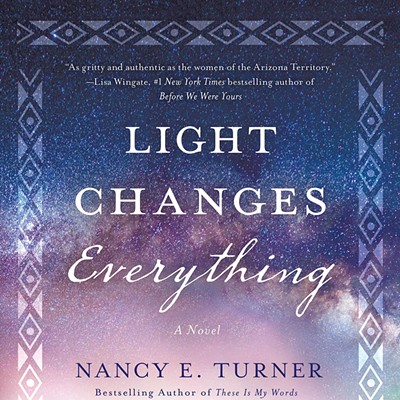So it's interesting to read a multiculturalist like Rudolfo Anaya, since he--like many other writers--firmly believes in the notion that when two cultures collide, something new and worthwhile inevitably emerges. Yet as McWorld continues to violently clash with jihad, my faith in the power of art to educate and unite disintegrates. These days, Anaya's insistence that the oral tradition of storytelling helps us to better understand the wreck that is humanity seems almost quaint, borderline cute. It flies in the face of what we know. Just take a look at the obliteration of Fallujah. What do we learn from it? That history teaches men nothing.
That said, I learned a great deal from reading Anaya's latest book, Serafina's Stories. It's a Southwestern take on the Arabian Nights, in which a 17th-century Spanish governor lords over the Pueblo Indians of Santa Fe, a dozen of whom stand accused of treason. One of the prisoners is a beautiful teenager who, having been educated by the friars of a mission church, speaks perfect Spanish. Her name is Serafina; her gift is storytelling, and her demeanor leads the governor to accept her challenge: She will recite a tale; if he enjoys it, then he must release a prisoner. Shades of Scheherazade, indeed. Stories within stories.
Serafina begins with the action-packed saga of "Juan del Oso," a Gilgamesh-type adventure hero who manages to give the devil himself a sound beating before saving three princesses from certain death and marrying one of them. The story is familiar to the governor, "But he had never heard tales from such a spellbinding storyteller. Her tone, the rhythms in her voice, and her presence had allowed his mind to the drift into the story. He felt he was there with Juan as he rescued the three princesses from their entrapment. ... As he listened he felt the burdensome responsibility of being governor being lifted. His eyelids had grown heavy as he relaxed and let his imagination carry him to the final scene at the castle."
Serafina's stories serve as a balm for the governor's raw, wounded soul, soothing the misery of his widowhood and his position of authority in a remote Spanish colony in the New World. He becomes transformed, giving clemency to Serafina's fellow prisoners one by one after each nightly tale that she recites. But the young girl has problems of her own--the Catholic Church quickly hears rumors of her influence on the governor, and friars are dispatched to persecute her as a witch. Will the governor protect her, or will she be forced to marry Gaspar, the guard who eavesdrops on Serafina's stories, in order to spare herself from the inquisition? And the governor? Is it paternal affection that he feels for her, or something more?
In the meantime, the tales continue: "Miranda's Gift," a Southwestern update on the bad-stepmother-versus-beautiful-stepdaughter Cinderella story; "The Adventures of Pedro de Ordimala," involving the funniest and most clever trickster outside of Bugs Bunny; and the heartbreaking romance between "Fabiano and Reyes," in which the former learns that love is always more than the flesh. This particular fable twists the main plot even further, when the governor begins to wonder if, in fact, Serafina is a sorceress, since her stories affect him so profoundly.
Like John Barth's Chimera, Serafina's Stories makes clear how narratives enrich our lives and make us better people in spite of our failings. Anaya's book is a celebration of the oral tradition, how it still resonates in our lives for the simple reason that it's a timeless art. Indeed, the author employs a spare style, heightening the fast, furious, fable-like atmosphere of these tales. Anaya has clearly given much thought to the superficial construction as well as the deeper themes of pre-20th-century literary culture. It's this commitment to understanding human communication that makes Anaya--and by default, Serafina--such a matchless seducer.
The holidays are always a time of shared stories, whether familial or familiar. Serafina's Stories reminds us that simply sitting down together and swapping yarns is an art form all its own. You could do much worse than to stuff a copy of this little gem of a book into somebody's stocking. With any luck, it'll teach us all something old, and something new.








